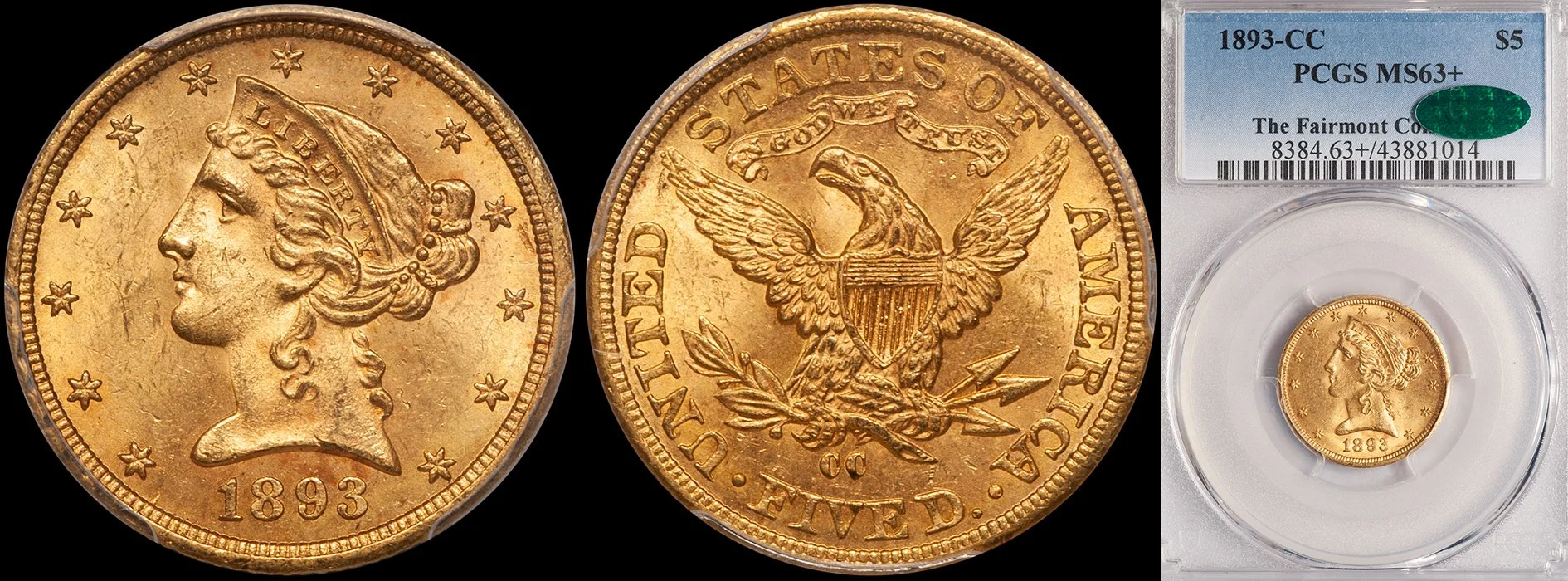The Not-So-Secret Secret 1883-O Eagle
/ About a month ago, I received an auction catalog from Olivier Chaponniere and Hess-Divo, two well-known Swiss firms located in Geneva and Switzerland, respectively. I often toss these catalogs directly into the recycling bin but thought I'd check this one out; if only because Hess-Divo has the reputation of selling some exceptional ancient and European coins.
I went right to the United States gold section and started browsing. A few minutes in, I was startled to see an 1883-O eagle that had been graded AU58 by PCGS. From the photo, the coin looked very fresh and very nice and I was, needless to say, very interested.

For those of you that are not familiar with the 1883-O eagle, a little background information is in order. This is the single rarest eagle from New Orleans with an original mintage of only 800. There are around 35-45 known in all grades including a unique Uncirculated piece that I sold around three years ago. There are a total of five graded AU58 at PCGS with none higher. I did a little bit of research on this specific coin and learned that it was new to the PCGS population report and, in all probability, totally fresh to the market.
At this point, I was feeling pretty cocky. After all, it was a European auction and not many American dealers were even going to know about the coin, right?
I started feeling a lot less cocky when I saw these two firms at the Central States show with the American gold coins from the auction on exhibit. My hat goes off to Chaponniere and Hess-Divo. I can't think of many times that European firms have brought American coins to an American show to market them to an American audience. And especially at a non-ANA show; can you imagine the excitement that these Swiss guys must have had regarding four days in Milwaukee? (But that's another story...)
I viewed the coins in person at CSNS and loved the 1883-O. It was fairly baggy but it had nice color, attractive semi-prooflike surfaces and a virtual absence of wear. It was the best 1883-O eagle I had seen in a few years and I felt it was at least the third or fourth finest known; and certainly the only one that was going to be available.
Now I had to determine what to pay for this coin. In regards to the 1883-O eagle, this date is a sort of Numismatic Rare Date Gold Franken-coin. No one cared about this date as recently as a few years ago but I've told collectors for years how rare and desirable it was. Around three years ago, low quality examples started to sell for three or four times more than they had only a few years before this. The last two AU58 examples that I handled were an nice AU58 (ex Pinnacle collection) and a beautiful NGC coin that I sold to a Washington, D.C. collector. I had sold them for less than $40,000 each but figured that in this market that they were going to bring around $60,000. So I bid $55,000 (which translated to $60,000 with the 10% buyers premium).
So how did I do? Not well. The coin sold for an amazing 90,000 Swiss Francs which, according to my on-line currency calculator, is around $78,225. I'm assuming the consignor was even more amazed as the catalogers had estimated the coin to bring 10,000 CHF.
I learned a few valuable lessons from this experience.
The first is, that in this day and age, you could hold a coin auction on the third moon of Saturn and it would still be publicized. The Internet means that the secret auction(s) of yore are now well-attended and the information that is available to collectors regarding pricing makes formerly secret dates not so secret anymore as well.
The second is that good coins will always be found by good collectors. I know the buyer of this coin very well and he was likely to have have bought it no matter where the auction was. The fact that the coins were brought to the CSNS show was amazingly helpful to him and I'm guessing it added at least $20,000 to the bottom line; if not more.
The third is that there are still really cool coins lurking in Europe. You'd think that with American dealers having scoured Switzerland, France, Luxembourg, etc. since the 1950's that there wouldn't be much left anymore. Not true. While coins like this AU58 1883-O eagle don't show up everyday, there are clearly still some eyebrow-raising coins left overseas.










